Florida Building Code 2017 Wind Loads
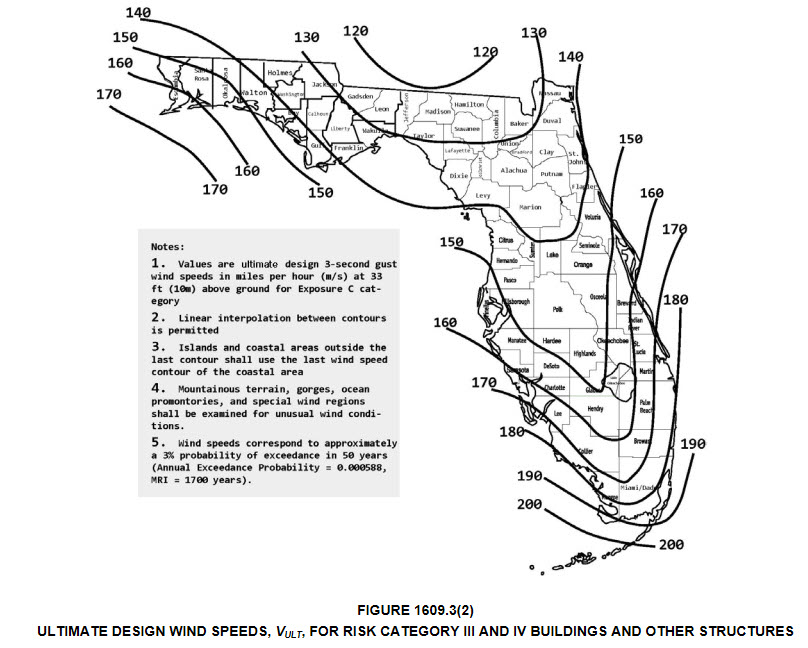
Update: The Florida Building Code 2020 was adopted in 2021
We have added the Florida Building Code 2017 Wind Loads to our software, MecaWind (Pro feature), and this gave us an opportunity to get familar with the Florida Building Code 2017. We wanted to take a moment to explain some of the things we learned about Florida Building Code 2017 Wind Loads (FBC 17). For reference, here is a link to view FBC 17 online, and you can also purchase a hard copy at www.floridabuilding.org .
Does FBC 17 reference ASCE 7-16?
There was a lot a panic a couple of years ago that FBC 2017 referenced ASCE 7-16. This isn’t true, the FBC 2017 still references ASCE 7-10. We have had a few Florida customers that have indicated that some local jurisdictions have required that they use ASCE 7-16. We haven’t been able to determine if this is a jurisdiction imposing their own requirements, or if it’s a misunderstanding of the FBC 17 requirements. Either way, we have both situations now covered in the MecaWind software since ASCE 7-10 or ASCE 7-16 can be used.
How is FBC 17 different than ASCE 7-10?
FBC 17 actually allows you to use ASCE 7-10. It goes further and gives the designer the option to use some criteria within FBC 17 to determine wind loads if the building meets certain requirements:
1609.6.1
41. Building or other structure <= 75 ft (22.86 m)
height-to-least width ratio of 4 or less
fundamental frequency >= 1 Hz
42. Not sensitive to dynamic effects
43. No located on a site for which channeling effects or buffeting are a concern
44. Building meet requirements of Simple Diaphragm Building
If the above criteria are met, then the method per Para 1609.6 can be followed. From our perspective, the method in Para 1609.6 appears to be a simplified method that is intended to be used by a Designer looking up values in Table 1609.6.2. This table has values for Cnet, and then the Cnet value is used to calculate the wind pressure using Equation 16-35.
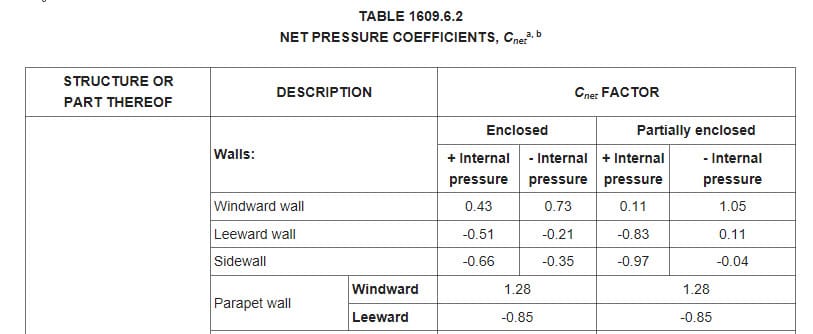
Comparison of FBC 17 vs ASCE 7-10:
How does FBC 17 compare to ASCE 7-10? To answer this we did a comparison of a simple gabled building using FBC 17 vs ASCE 7-10. For the ASCE 7-10 option we used Ch 27 Pt 1 for the Main Wind Force Resisting Design (MWFRS) and Ch 30 Pt 1 for the Components and Cladding (C&C).
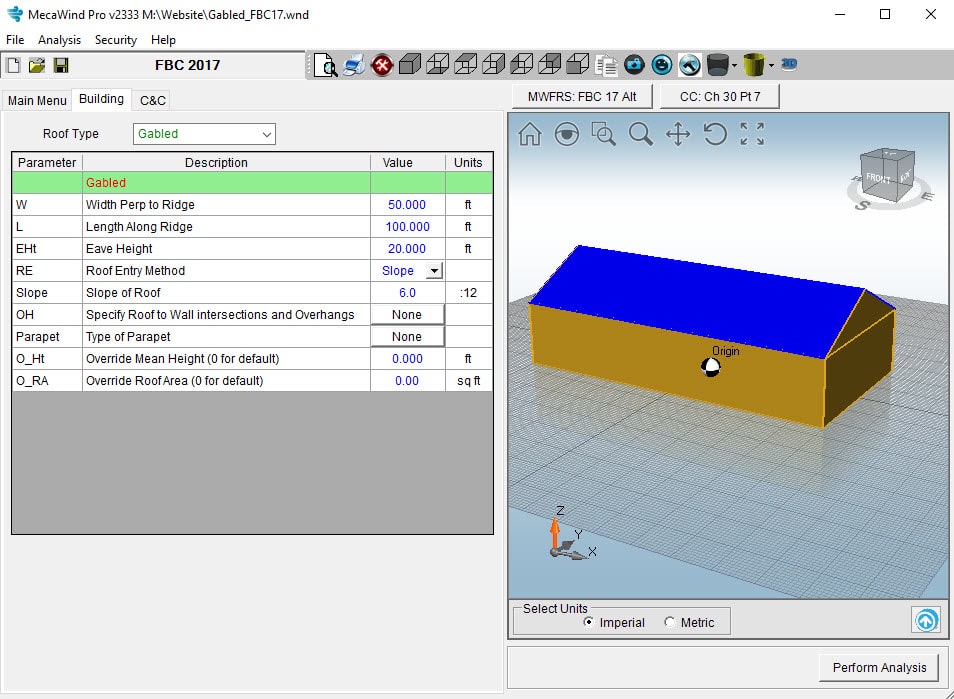
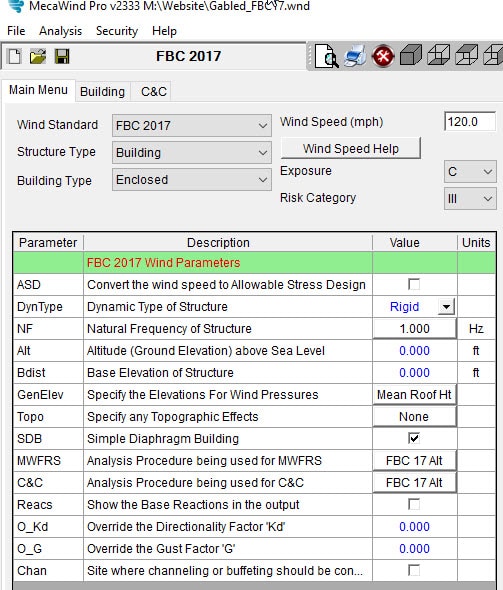
Comparing the results we see that some values are higher and others are lower. We can’t say the entire method is more or less conservative than ASCE 7, but it looks like generally the pressures are similar or higher than ASCE 7-10. It is worth mentioning that this comparision is just one example, and we can’t draw too many general conclusions based upon just one comparision.
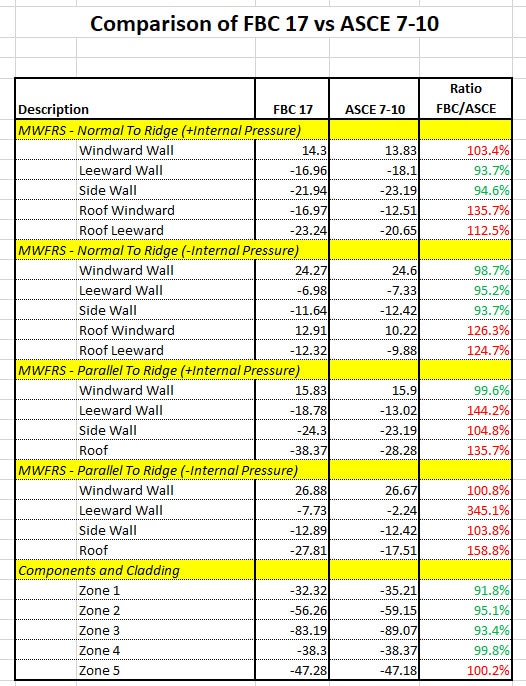
Does FBC 17 address “Other Structures”?
FBC 17 does address other nonbuilding structures, such as chimneys, tanks and similar structures. On the surface the table for these structures appear to be different from that in ASCE 7; however, after some investigation we see that it yields identical pressures to ASCE 7-10. Thereforce, we recommend just using ASCE 7-10 since FBC 17 offers no advantage.
Other Special Considerations:
There are some other special considerations when following FBC 17.
1) Rigid Tile – There are special guidelines for calculating the wind loads acting on Rigid Tile in Para 1609.5.3.
2) Garage or Rolling Doors – There are special requirements for Garage or Rolling doors that are handled in Para 1609.7.
Please note that both of these special provisions are included in the FBC 17 option of MecaWind.
Allowable Stress Design Wind Speed:
In ASCE 7-10, we use ultimate wind loads and then the load combinations factors are applied if Allowable Stress Design (ASD) is being performed. FBC 17 handles the case of ASD design a little different, it modifies the wind speed used in the calculations to an ASD velocity using Equation 16-33.

Selecting FBC in MecaWind Software:
As mentioned earlier, the FBC 17 has been added to MecaWind. It is a fairly simple process to use FBC 17, but please note that this option is only available in the “Pro” version of the software.
To use FBC 17, select that standard in the dropdown. Then in the MWFRS selection menu, select the FBC Sec 1609.6 Alternative method.
Similiarly, in the Components and Cladding method selection menu, select the FBC Sec 1609.6 Alternative method.
If when selecting the MWFRS or C&C methods you are unable to select FBC and the circle to the right is RED, that means that you don’t meet all of the criteria to select the FBC Alternative method. For example, in the image below the circle is red because the building is NOT a simple diaphragm building and that is a requirement of the FBC alternative method. In that case, you would designate the building is a Simple Diaphragm Building (if that is in fact true) and then the circle will change to green and you will be able to select that option since all criteria have been met.
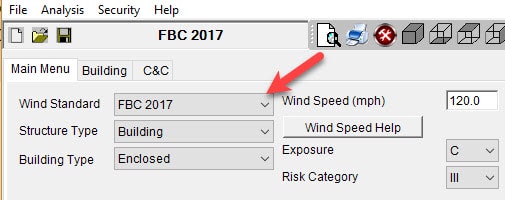
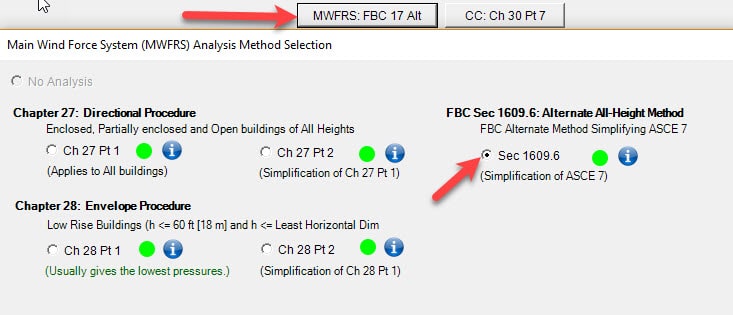

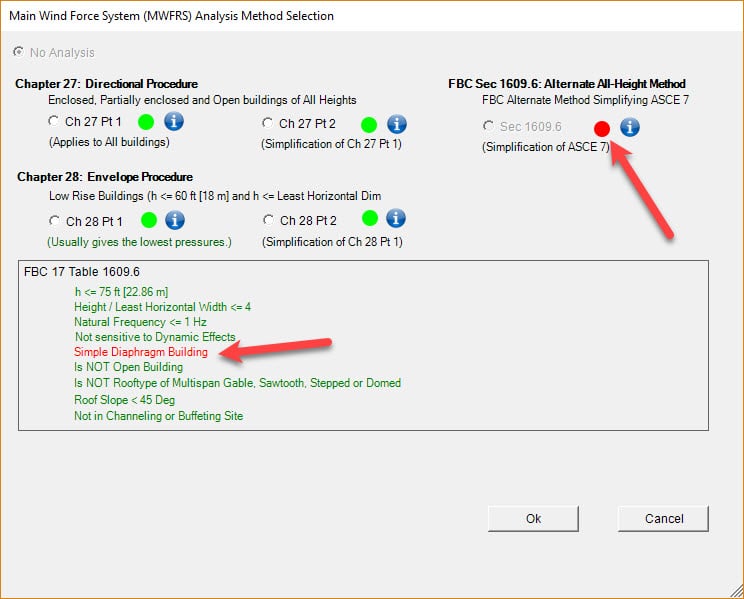
Conclusion:
In conclusion, it doesn’t appear based upon the examples we have checked that there is any clear advantage to using FBC 17 rather than ASCE 7. Now with a MecaWind Pro license, a user can check both codes and determine which they wish to use in their design. The FBC wind provisions appear to be set up with the intent that the values can be looked up easily and calculated using the tables; however, with computer software no one method is any easier than the other to calculate, it usually is about the same number of keystrokes either way. So use the method or code that you are required to use, or that you feel is the best fit for your structure.
